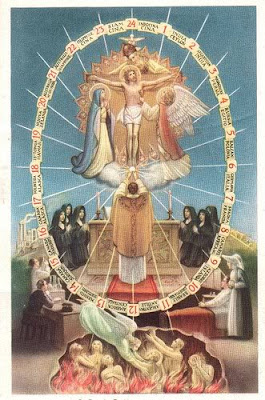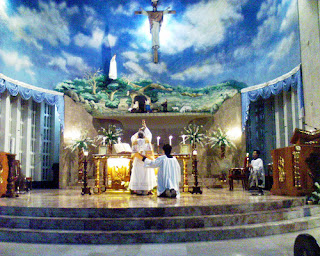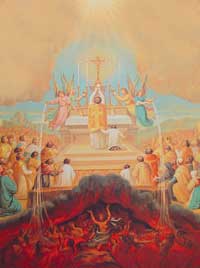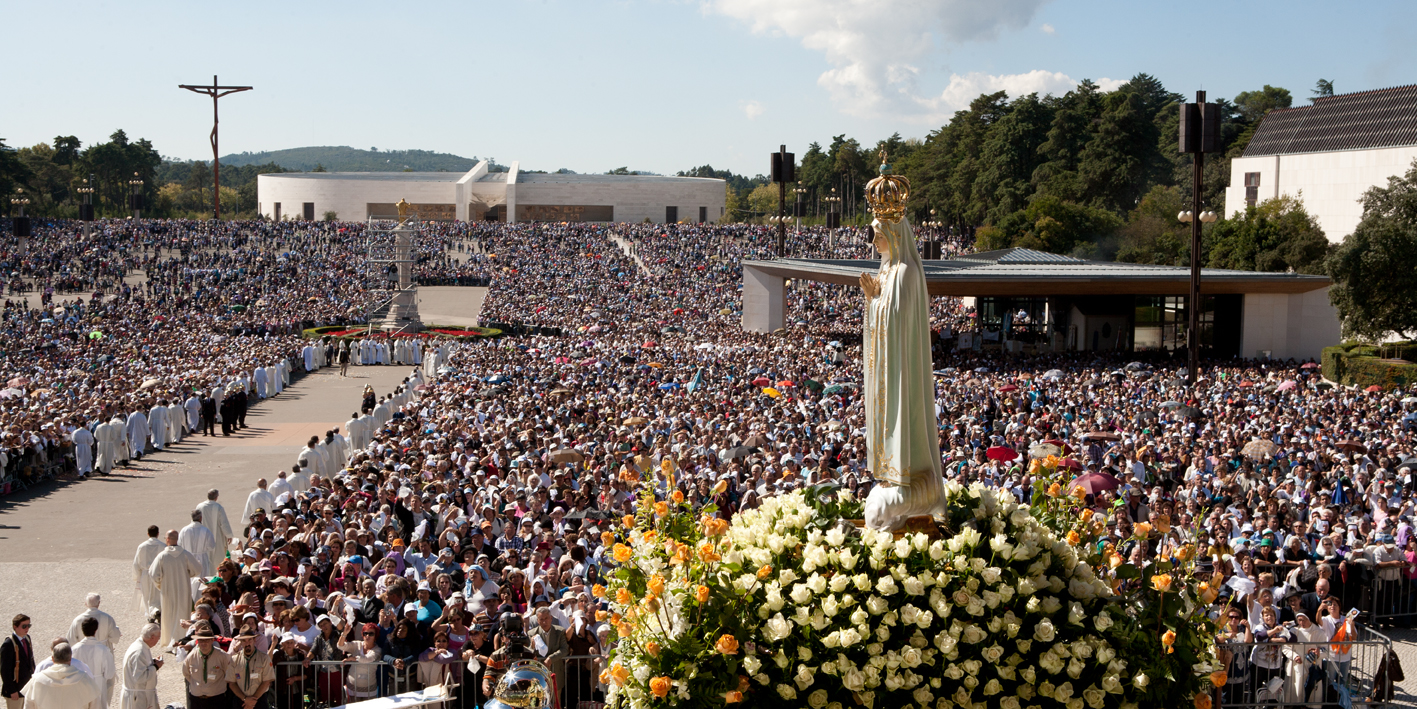



MEDIATOR DEI
ON THE SACRED LITURGY
TO THE VENERABLE BRETHREN, THE PATRIARCHS, PRIMATES,
ARCHBISHOPS, BISHIOPS, AND OTHER ORDINARIES
IN PEACE AND COMMUNION WITH THE APOSTOLIC SEE
18. But it is His will, besides, that the worship He instituted and practiced during His life on earth shall continue ever afterwards without intermission. For he has not left mankind an orphan. He still offers us the support of His powerful, unfailing intercession, acting as our "advocate with the Father."[18] He aids us likewise through His Church, where He is present indefectibly as the ages run their course: through the Church which He constituted "the pillar of truth"[19] and dispenser of grace, and which by His sacrifice on the cross, He founded, consecrated and confirmed forever.[20]
19. The Church has, therefore, in common with the Word Incarnate the aim, the obligation and the function of teaching all men the truth, of governing and directing them aright, of offering to God the pleasing and acceptable sacrifice; in this way the Church re-establishes between the Creator and His creatures that unity and harmony to which the Apostle of the Gentiles alludes in these words: "Now, therefore, you are no more strangers and foreigners; but you are fellow citizens with the saints and domestics of God, built upon the foundation of the apostles and prophets, Jesus Christ Himself being the chief corner-stone; in whom all the building, being framed together, groweth up into a holy temple in the Lord, in whom you also are built together in a habitation of God in the Spirit."[21] Thus the society founded by the divine Redeemer, whether in her doctrine and government, or in the sacrifice and sacraments instituted by Him, or finally, in the ministry, which He has confided to her charge with the outpouring of His prayer and the shedding of His blood, has no other goal or purpose than to increase ever in strength and unity.
20. This result is, in fact, achieved when Christ lives and thrives, as it were, in the hearts of men, and when men's hearts in turn are fashioned and expanded as though by Christ. This makes it possible for the sacred temple, where the Divine Majesty receives the acceptable worship which His law prescribes, to increase and prosper day by day in this land of exile of earth. Along with the Church, therefore, her Divine Founder is present at every liturgical function: Christ is present at the august sacrifice of the altar both in the person of His minister and above all under the eucharistic species. He is present in the sacraments, infusing into them the power which makes them ready instruments of sanctification. He is present, finally, in prayer of praise and petition we direct to God, as it is written: "Where there are two or three gathered together in My Name, there am I in the midst of them."[22] The sacred liturgy is, consequently, the public worship which our Redeemer as Head of the Church renders to the Father, as well as the worship which the community of the faithful renders to its Founder, and through Him to the heavenly Father. It is, in short, the worship rendered by the Mystical Body of Christ in the entirety of its Head and members.

 inundado por um mistério de luz que é Deus e N´Ele vi e ouvi -A ponta da lança como chama que se desprende, toca o eixo da terra, – Ela estremece: montanhas, cidades, vilas e aldeias com os seus moradores são sepultados. - O mar, os rios e as nuvens saem dos seus limites, transbordam, inundam e arrastam consigo num redemoinho, moradias e gente em número que não se pode contar , é a purificação do mundo pelo pecado em que se mergulha. - O ódio, a ambição provocam a guerra destruidora! - Depois senti no palpitar acelerado do coração e no meu espírito o eco duma voz suave que dizia: – No tempo, uma só Fé, um só Batismo, uma só Igreja, Santa, Católica, Apostólica: - Na eternidade, o Céu!
inundado por um mistério de luz que é Deus e N´Ele vi e ouvi -A ponta da lança como chama que se desprende, toca o eixo da terra, – Ela estremece: montanhas, cidades, vilas e aldeias com os seus moradores são sepultados. - O mar, os rios e as nuvens saem dos seus limites, transbordam, inundam e arrastam consigo num redemoinho, moradias e gente em número que não se pode contar , é a purificação do mundo pelo pecado em que se mergulha. - O ódio, a ambição provocam a guerra destruidora! - Depois senti no palpitar acelerado do coração e no meu espírito o eco duma voz suave que dizia: – No tempo, uma só Fé, um só Batismo, uma só Igreja, Santa, Católica, Apostólica: - Na eternidade, o Céu!